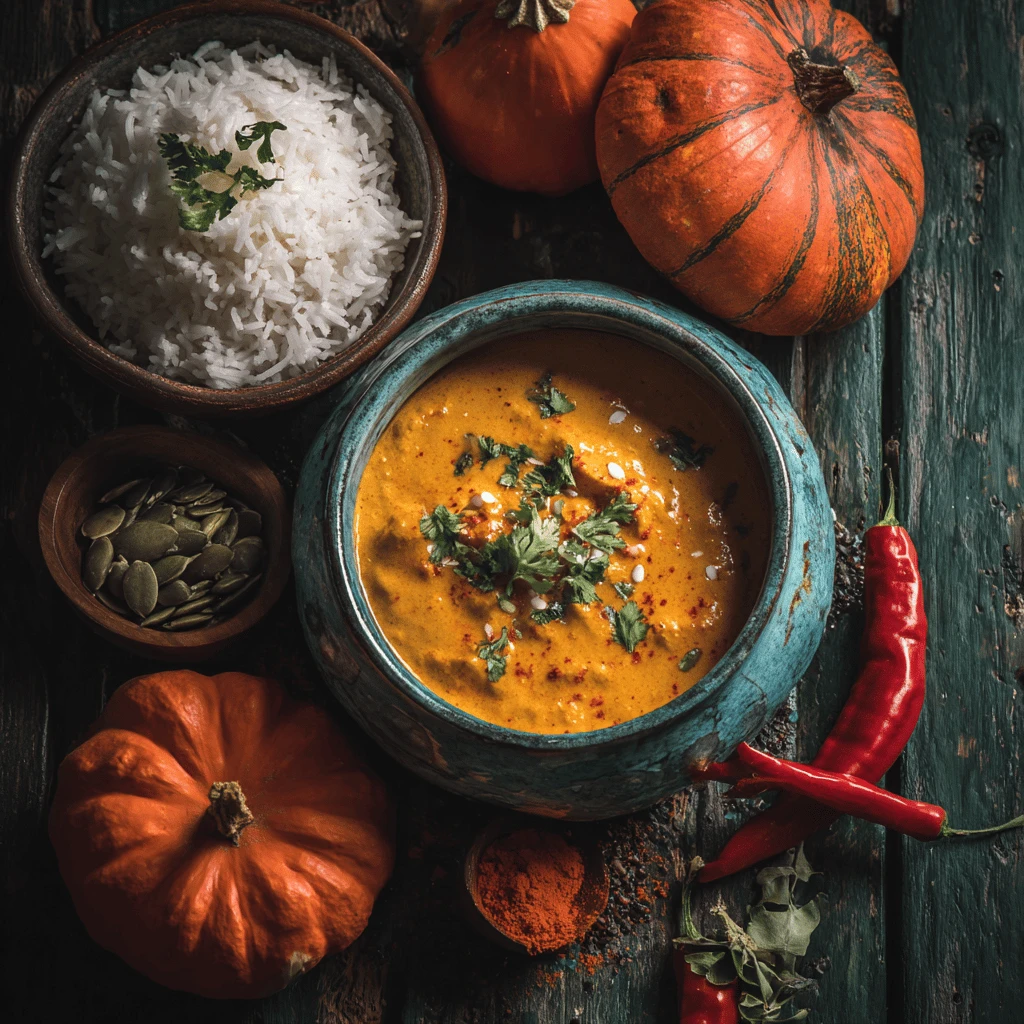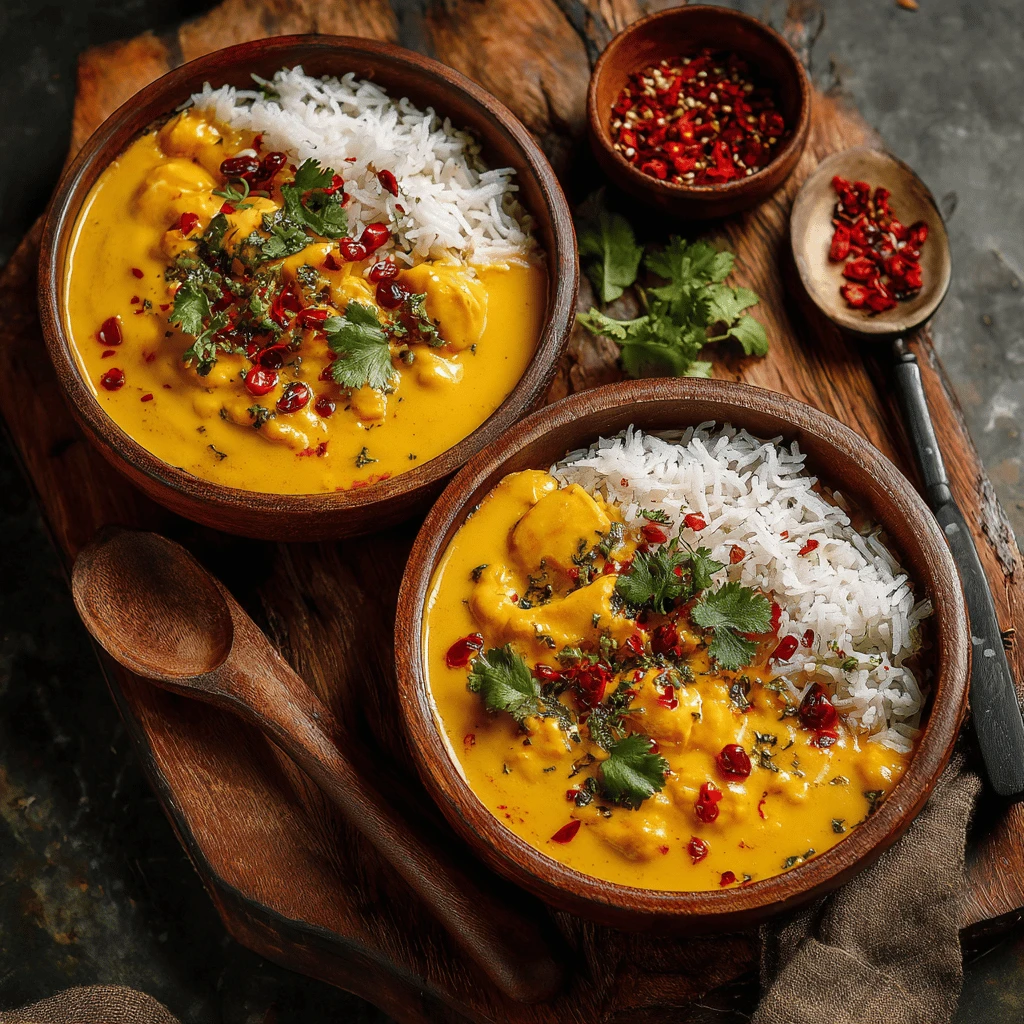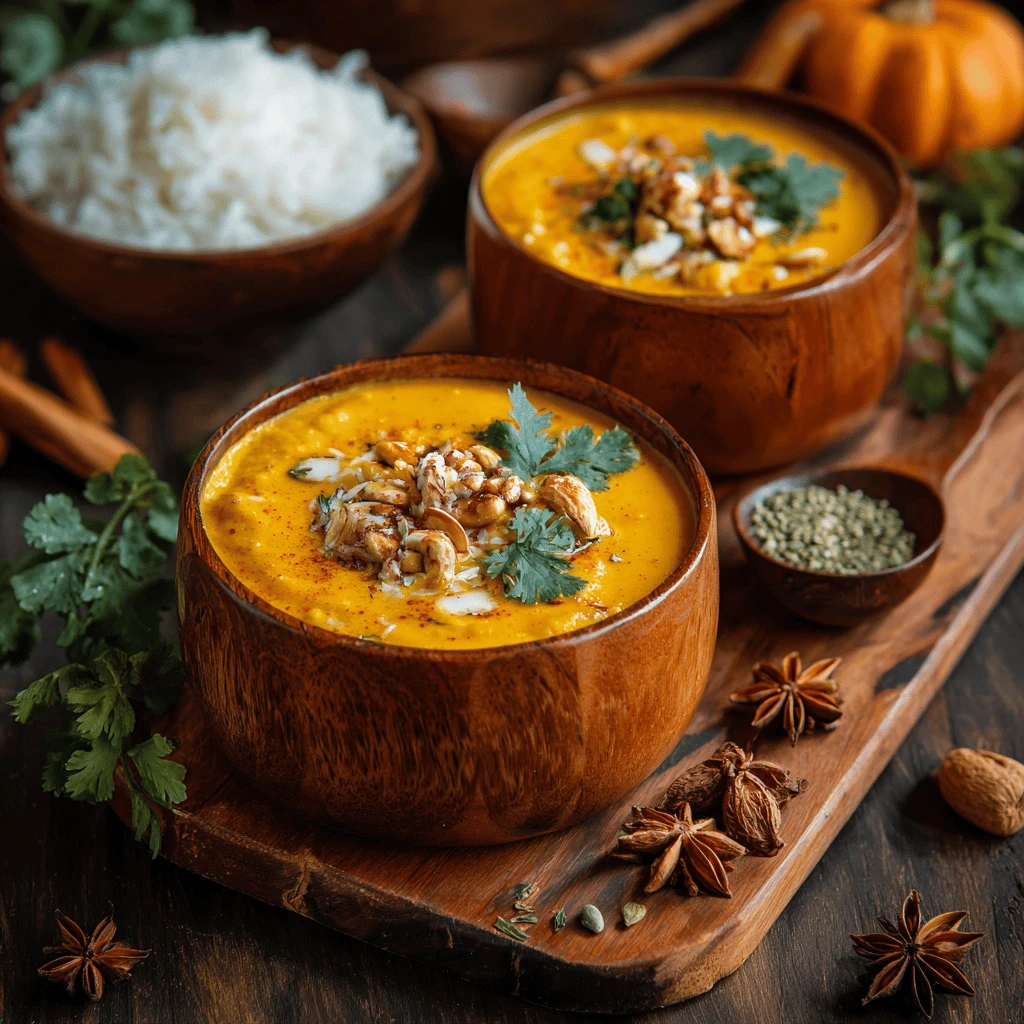No-Bake Kid-Friendly Pumpkin Curry
Pumpkin and curry might sound like an odd combination, but trust us, this no-bake pumpkin curry is a delightful and surprisingly easy meal to make, especially with kids! This recipe focuses on simplicity, flavor, and minimal cooking, making it perfect for busy weeknights or introducing your little ones to new tastes. Get ready to create a warm, comforting dish that the whole family will enjoy.
Why No-Bake? The Beauty of Simplicity
Traditional curries often involve simmering ingredients for extended periods. This no-bake version leverages pre-cooked ingredients and clever techniques to deliver delicious flavor without the fuss. No baking also helps preserve vibrant flavors and nutrients. This makes it ideal for warmer months when you don’t want to heat up your kitchen. Plus, it’s incredibly kid-friendly, allowing them to participate safely in the preparation process.
Think of this as a culinary adventure where your kids can be the chefs, mixing and matching ingredients to create their own unique version of pumpkin curry. It’s a fun and educational way to introduce them to different spices and flavors.
Ingredients for Kid-Friendly Pumpkin Curry
Let’s gather the essentials for this flavor-packed dish. Remember, you can adjust quantities to suit your family’s preferences.
- Pumpkin Puree: The star of the show! Use 100% pumpkin puree, not pumpkin pie filling.
- Coconut Milk: Full-fat coconut milk provides richness and creaminess. Light coconut milk can be used for a lighter dish.
- Curry Powder: A pre-made blend of spices for convenience and consistent flavor. Choose a mild curry powder to start with, especially if your kids are new to curry.
- Chickpeas: Canned chickpeas add protein and texture. Rinse and drain them before use.
- Spinach: Fresh spinach wilts quickly and adds a boost of vitamins and minerals. You can also use frozen spinach, thawed and squeezed dry.
- Diced Tomatoes: Canned diced tomatoes provide acidity and sweetness.
- Onion & Garlic: Optional, but they add depth of flavor. If you choose to use them, finely mince them and sauté lightly in a pan with a bit of coconut oil or olive oil before adding them to the curry mixture to mellow out the strong flavors.
- Lime Juice: Fresh lime juice brightens the flavors and adds a tangy kick.
- Maple Syrup or Honey: Just a touch to balance the savory elements. (Optional)
- Salt & Pepper: To taste.
- Optional Toppings: Chopped cilantro, peanuts, shredded coconut, yogurt or sour cream.
- Serving Suggestion: Cooked rice, quinoa, or naan bread for serving.
Consider adding other vegetables your kids enjoy, such as bell peppers, peas, or carrots. You can even get them involved in choosing their favorite veggies to add to the mix!
Step-by-Step Guide to No-Bake Pumpkin Curry
Now for the fun part: putting it all together! Follow these simple steps to create a delicious and satisfying no-bake pumpkin curry.
1. Combine Ingredients: In a large bowl, combine the pumpkin puree, coconut milk, curry powder, drained chickpeas, diced tomatoes, and spinach. If using, add the sautéed onion and garlic.
2. Season and Sweeten: Add lime juice, maple syrup or honey (if using), salt, and pepper. Mix well to ensure all ingredients are evenly distributed.
3. Adjust Consistency: If the curry is too thick, add a splash of water or vegetable broth to reach your desired consistency.
4. Taste and Adjust: Taste the curry and adjust the seasonings as needed. Add more curry powder for a spicier flavor, more lime juice for tanginess, or more maple syrup for sweetness.
5. Serve and Enjoy: Serve the curry over cooked rice, quinoa, or with naan bread. Garnish with your favorite toppings, such as chopped cilantro, peanuts, or shredded coconut.
Tips for Kid-Friendly Preparation:
- Let them measure: Kids love to help with measuring ingredients. Provide them with measuring cups and spoons and let them assist in adding the ingredients to the bowl.
- Get them stirring: Stirring is another task that kids can easily handle. Make sure they stir gently to avoid spilling the ingredients.
- Create a topping bar: Set out a variety of toppings and let your kids choose their favorites to add to their curry. This allows them to customize their meal and encourages them to try new things.
- Introduce new flavors gradually: If your kids are hesitant to try new flavors, start with a small amount of curry powder and gradually increase it as they become more accustomed to the taste.
- Make it a fun activity: Turn the preparation of the pumpkin curry into a fun and engaging activity for the whole family. Play music, tell stories, and enjoy the process of creating a delicious meal together.
Variations and Adaptations
This no-bake pumpkin curry is incredibly versatile. Feel free to experiment with different ingredients and flavors to create your own unique version.
- Add Protein: Tofu, cooked chicken, or shrimp can be added for extra protein.
- Spice it Up: If you like a spicier curry, add a pinch of chili powder or a few drops of hot sauce.
- Make it Vegan: Ensure that your maple syrup or honey is plant-based.
- Use Different Vegetables: Swap out the spinach for other leafy greens, such as kale or collard greens. Add other vegetables like bell peppers, zucchini, or green beans.
- Experiment with Spices: Try adding other spices, such as cumin, coriander, or turmeric, to create a more complex flavor profile.
- Sweet Potato Substitute: For a slightly different flavor profile, use mashed sweet potato instead of pumpkin puree.
- Nut Butter Boost: Add a tablespoon of peanut butter or almond butter for a richer, nutty flavor. This also adds a bit of protein.
The Health Benefits of Pumpkin Curry
This no-bake pumpkin curry isn’t just delicious; it’s also packed with nutrients.
- Pumpkin: Rich in vitamins A and C, as well as antioxidants.
- Coconut Milk: Contains healthy fats and can help boost your immune system.
- Chickpeas: A good source of protein and fiber.
- Spinach: High in vitamins and minerals, including iron and calcium.
- Curry Powder: Often contains anti-inflammatory spices like turmeric.
By incorporating this dish into your family’s meal plan, you’re providing them with a healthy and flavorful meal that’s both easy to prepare and packed with nutrients.
Frequently Asked Questions
Here are some common questions about making kid-friendly pumpkin curry.
- Can I make this ahead of time? Yes, this curry can be made a day or two in advance. Store it in an airtight container in the refrigerator. The flavors will meld together even more over time.
- How long does it last in the refrigerator? This curry will last for 3-4 days in the refrigerator.
- Can I freeze it? Yes, this curry freezes well. Store it in an airtight container in the freezer for up to 2 months. Thaw it overnight in the refrigerator before reheating.
- My child doesn’t like curry powder. What can I substitute? If your child is not a fan of curry powder, you can use a mild spice blend such as garam masala or even just a pinch of turmeric and cumin. Alternatively, you can omit the curry powder altogether and focus on the natural sweetness of the pumpkin and other vegetables.
- Can I use fresh pumpkin instead of canned puree? Yes, you can use fresh pumpkin, but you’ll need to cook it first. Roast or steam the pumpkin until it’s tender, then puree it in a food processor or blender.
- What’s the best way to reheat this curry? You can reheat this curry in the microwave or on the stovetop. If reheating on the stovetop, add a splash of water or vegetable broth to prevent it from sticking to the pan.
- My curry is too watery, how do I thicken it? If your curry is too watery, you can thicken it by simmering it on low heat for a few minutes to allow some of the liquid to evaporate. You can also add a tablespoon of cornstarch or arrowroot powder mixed with a little water to create a slurry and stir it into the curry.
- Can I add more vegetables to this curry? Absolutely! Feel free to add any vegetables that your family enjoys, such as bell peppers, broccoli, cauliflower, or peas.




